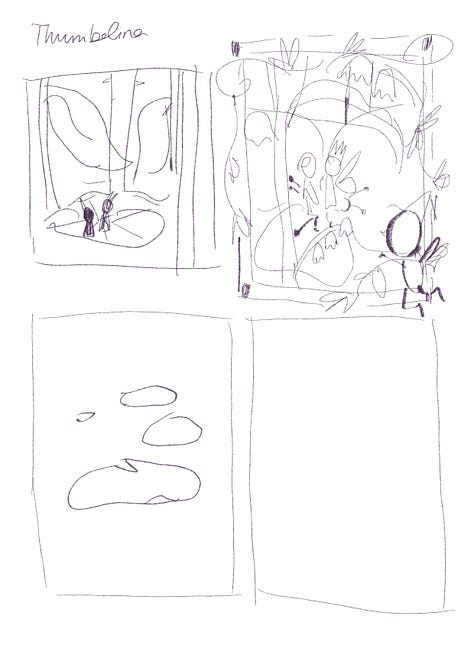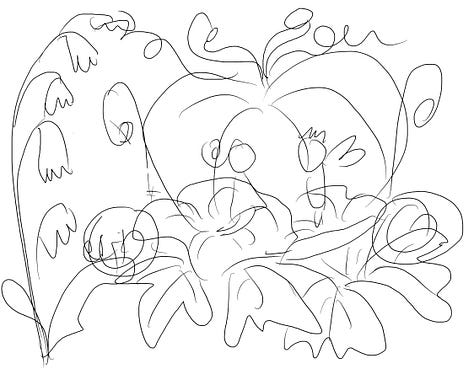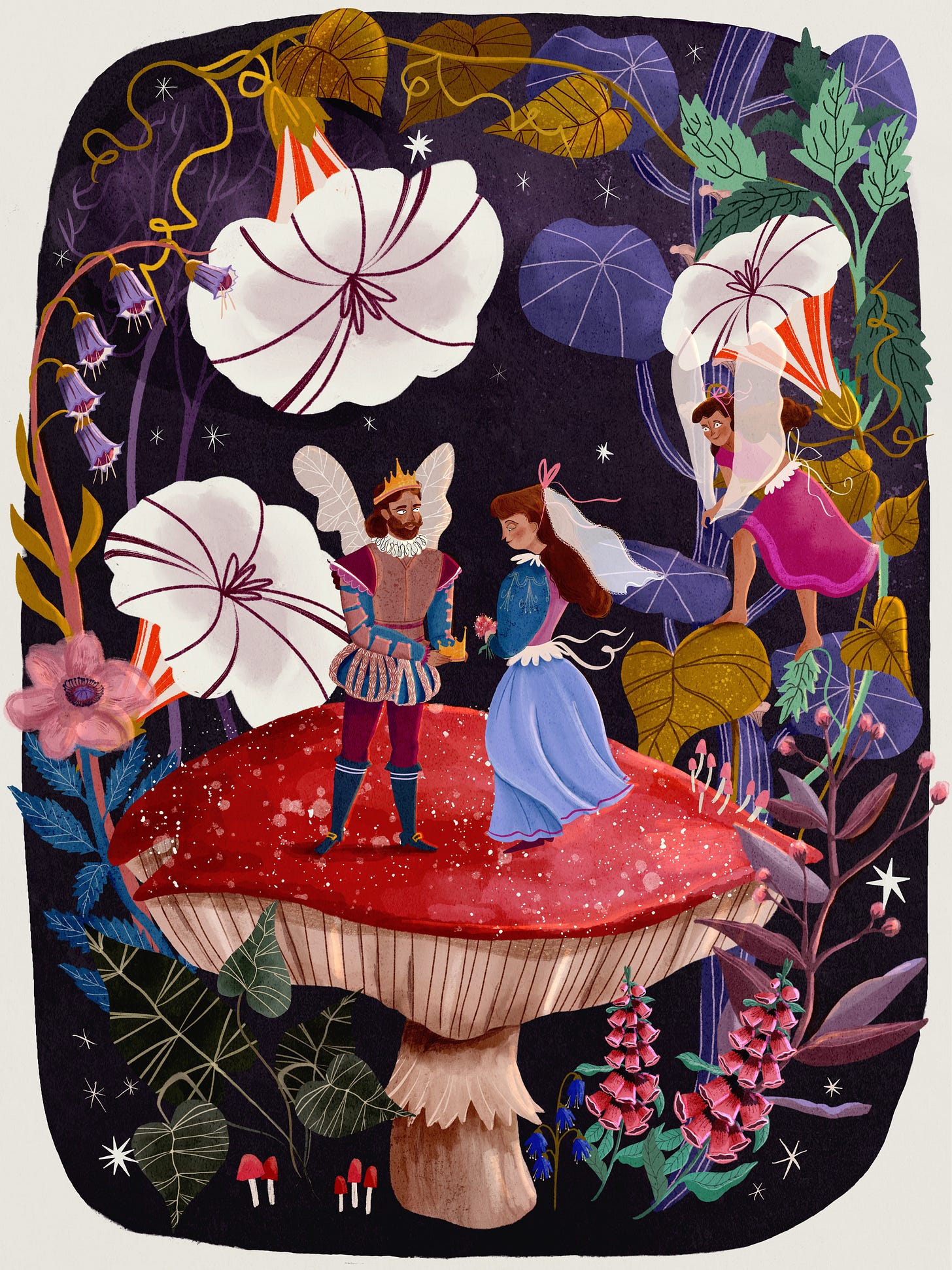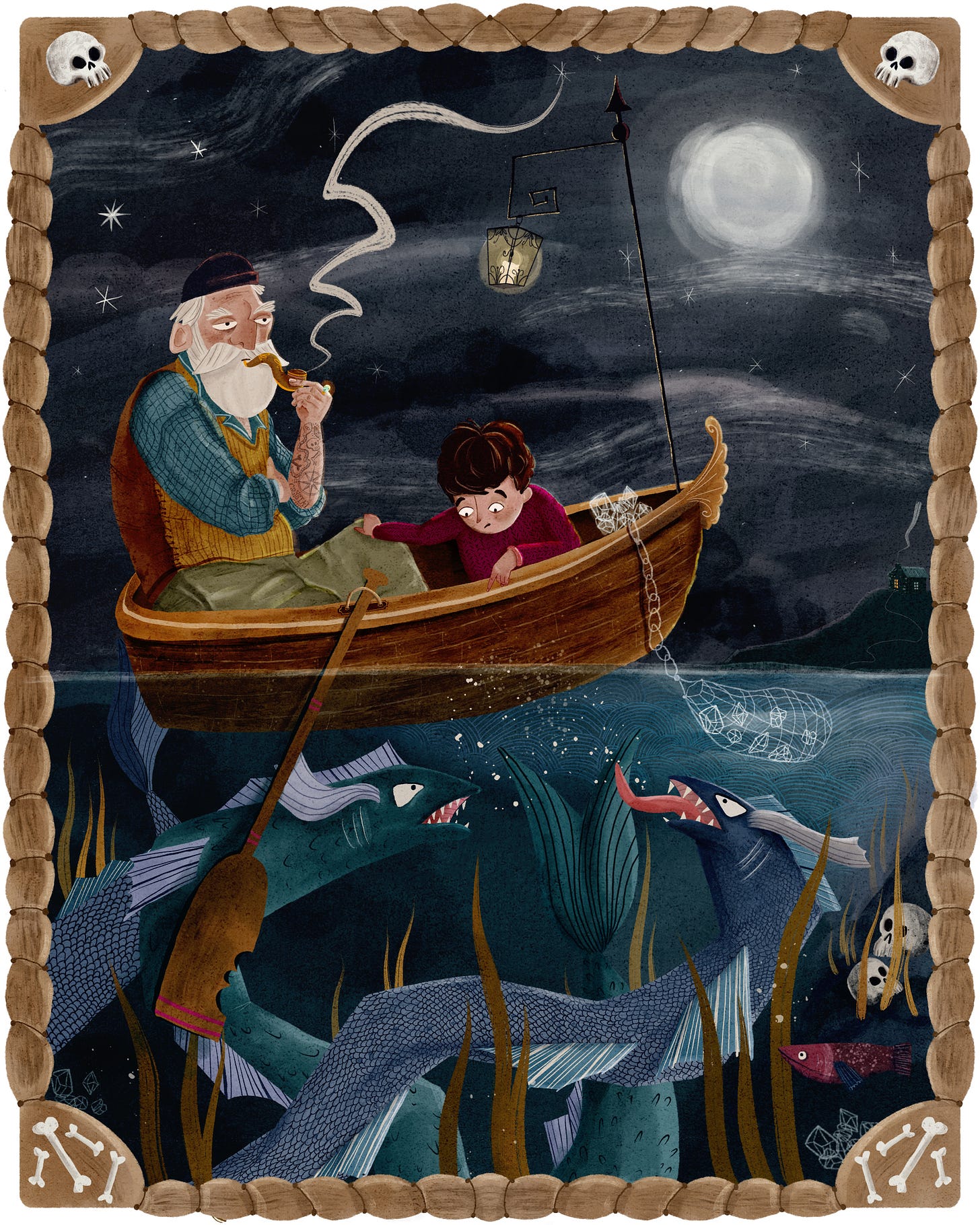While I am finishing a deadline for a Christmas book, I wanted to show you a quick sequence of old sketches that lead to a final illustration. While these illustrations are from a few years ago, they give a nice overview of how I work after I received a brief. In this case, from my agent for portfolio development.
The Briefing
Thumbelina:
Show a wedding scene of Thumbelina and the prince getting married in the kingdom of flowers. They can be standing together at the center of a flower surrounded by colorful blooms all around them. Use the scale of the flowers around them to emphasize their small size.



In these sketches, you can see my mind maps, thumbnails, and rough ideas as I explored how to bring the Thumbelina brief to life.
The Briefing
Deep Sea Monster:
Ominous, broad nighttime scene showing an old bearded man and a young boy sitting in a small wooden boat in the middle of a lake. Below them we see the shadow of a large sea monster lurking beneath the surface.
For the Deep Sea Monster, these initial sketches show my thought process, from mapping out ideas to developing the scene's mood and composition. I tried different compositions.
Ready to Tackle Your Own Briefs and Spark New Ideas?
Whether you are developing your portfolio or working on a client project, a clear briefing is an incredible starting point. Here is how you can approach it to generate strong ideas and effective thumbnails:
Deconstruct the Brief: Break down the brief into key elements. Identify the core message, required mood, essential characters or objects, and any specific stylistic notes. For example, in the Thumbelina brief, the keywords were wedding scene, kingdom of flowers, center of a flower, colorful blooms, and small size emphasis. For Deep Sea Monster, it was ominous, nighttime, old bearded man, young boy, small wooden boat, lake, and shadow of a large sea monster.
Mind Map Your Concepts: Start with the main keywords from your brief and branch out with related ideas, synonyms, visual metaphors, and potential compositions. This helps you explore a wide range of possibilities without judgment.
Thumbnail Everything: Do not aim for perfection. Rapidly sketch many small thumbnails, exploring different angles, compositions, character placements, and lighting scenarios. The goal is quantity over quality in this phase, allowing you to quickly visualize and discard ideas until something clicks. Remember, your sketchbook is a safe space for raw ideas.
Embrace the Iteration: Your first ideas are rarely your best. Be willing to refine, combine, and even discard initial concepts as you explore. This iterative process, moving from rough ideas to more defined sketches, is where the strongest solutions emerge.
By giving yourself permission to play and explore in these early stages, you build a robust foundation for your final illustration, whether it is for a client or to expand your personal portfolio.
I hope this peek behind the scenes inspires your own creative explorations!










Thanks for sharing your process. It’s a good reminder that it’s ok to start messy.